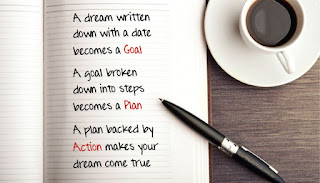Are you ready to start Christmas shopping yet? Is it too early? Are you emotionally ready yet?
Can you imagine buying whatever you want: An iWatch, or even a new iPhone, that handbag you keep eyeing off as you walk past the store, a new jacket, or the latest sports shoes. Put it on your credit card, or split it over two credit cards, then it won’t seem as bad when you look at the statement.
We’ve all done it and it feels good. Coming home with bags of goodies, trying them on in secret, then when quizzed weeks later “When did you get that?” you retort “This old thing”. Haha, they’ll never know. Surely you’ve heard the old saying that “You live up to your income”, as your paycheque or income rises, so does your lifestyle. There’s nothing wrong with living well.
But, and there is always a But… that one-off spending spree is very rarely a “one-off”. It is addictive and gets the pleasure endorphins pumping. “Why not do it again, next week, it was fun and there’s still credit available on the card” And on top of all that the airlines are giving you reward points! Why wouldn’t you use your card?
Did you know that Australians owe approximately $33 billion in credit card debt. Here’s an easier number: Thirty-Three Billion Dollars. Personal debt per credit card holder is $4301.00 with an average of $723.45 in interest per annum. Yikes!
For many of us refusing to use a credit card is simply not an option. Without one it’s difficult to pay bills and even make reoccurring payments. So use it for that and not for shopping. What should you use for shopping and spending I hear you murmur sarcastically, Use a debit card. You can’t spend more than you have in the bank that way. You’ll find you will spend less and when you next look at your bank statement you’ll even question what you are buying and maybe start to budget.
While you’re at it, have a look at your monthly credit card statement. It shows how long it will take you to pay off your balance and how much interest you’ll pay if you only pay the minimum each month. (The short answers are “forever” and “heaps.”)
So overspending once in awhile is good for you; hopefully it shows you how addictive it can be and gets you to review the financial consequences of that binge. Although a “once-off” may not impact you that much now, think about those endorphins that are working to create a monster, and there’s nothing more destructive than a spending monster.
What about all that money you are spending on short term pleasure, and could be using toward the car, or house, renovation, holiday: the big ticket items that need saving for. Shame as those would be long term memories, not just a day of short term pleasure, even if it is in the name of Christmas.
What can you do to resist the “spending-money-I-just-don’t-have” urge?
Firstly use your debit card more than your credit card. Secondly put a simple budget in place, and then you’ll know what you have to spend, and what you don’t. We like to call a budget ‘Your Spending Plan’ as that is what we are all working around: Spending.
Here’s a helpful downloadable guide to control your spending and build your savings. 6-steps to Financial Security, a Free e-book from Your Money Sense. It’s a good starting point to get you in the right mindset to manage your money.
So next time you go for a bender at the shopping centre, take a few deep breaths before walking in, and think about the long term financial goal.
__________________________________________________________________________________________
Arc Wealth Financial Adviser - Karen Vickers
Suite 20 / 6-8 Herbert Street, St Leonards, NSW 2065






